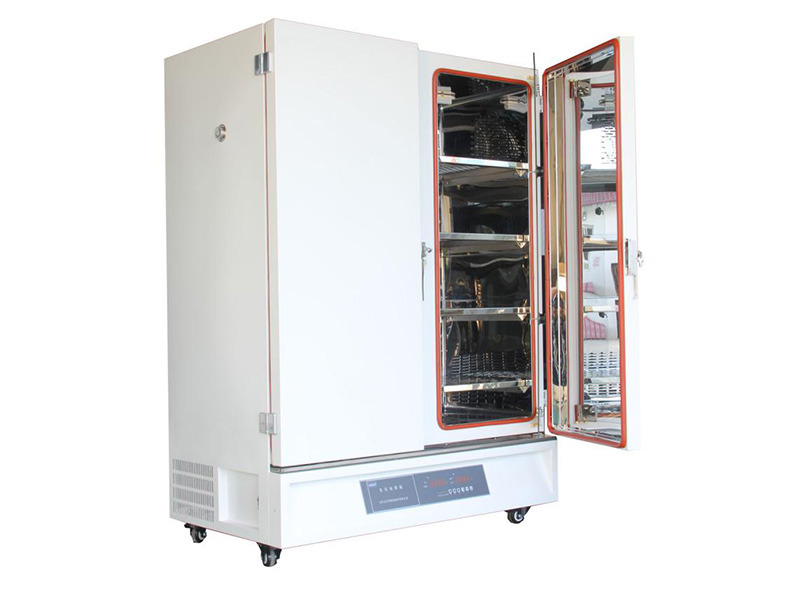In a medical laboratory, the risk of contamination of cell cultures is immeasurable—no matter how careful the work. Miscalculation of risk is certainly not unheard of, and contamination often results in cultural loss. Therefore, in this blog, we want to shed light on how to systematically detect and avoid contamination in cell lines.
Every medical laboratory is under threat day in and day out
Microbial contamination in cell cultures—including those purchased from third parties—is not uncommon in laboratories. In fact, the opposite is true: Many cell lines grown in the lab are infected with mycoplasma. Tiny fungal spores lurk everywhere and can be airborne. Of course, when working in a sterile environment, there is room for human error. It's easy to make mistakes.
Horror scenarios in cell culture labs - various types of contamination:
Microbial contamination (bacteria, mycoplasma, fungi, yeast, etc.)
virus contamination
Protein contamination (prion)
Chemical pollution (leachables and extractables from plastics, heavy metals, etc.)
Cross-contamination with other cell cultures
Where does pollution come from?
1. How "clean" was primitive culture?
Problems usually start with the original material. Even with the best efforts in the production of media, some materials cannot be completely sterile. Therefore, there is always a risk of mycoplasma slipping through the sterile filter. Prions can even survive steam sterilization at 121 °C.
2. Is the working laboratory really a sterile environment?
One of the main causes of laboratory contamination is the human body. For example, a lot of cross-contamination can be avoided if laboratory technicians avoid working on multiple production lines at the same time on a sterile bench. One culture can quickly infect another if the fluid is not handled properly.
Also, haste is the worst enemy of sterile work. The door of the CO2 incubator should not be left open for no reason, certainly not for long periods of time. Laboratory technicians should only be working on one cell line at a time, no matter how much time pressure they are under. When unpacking single-use pipettes under the bench, once the cap is unscrewed, the cap must be set aside - keyword: Good Laboratory Practice (GLP).
For more information, read our blog post: "Five exciting applications for CO2 incubators".
3. Are you using the correct laboratory equipment?
Of course, it's entirely possible that even the equipment used in medical labs can lead to contamination of cell cultures. Therefore, we recommend:
Use plastic containers without plasticizers
Choose the right
mold incubator location (locations near the washbasin can lead to soap contamination)
Use incubator accessories made of biocide copper
When antibiotics are used, antibiotic-free strains should be cultivated from time to time. (This is because antibiotics mask the contamination, and the infection can spread.)
What investigative methods can be used to track which infections?
The most dangerous thing about mycoplasma infections is that they often go undetected for long periods of time. In principle, contamination events can be controlled and tracked in a variety of ways, some of which are very complex and others less so.
Experienced laboratory technicians can tell if cross-contamination has occurred simply by looking through a microscope.
If we extract all the DNA from the cell culture, its mycoplasma DNA content can be detected using PCR methods.
Laboratories performing viral transduction or bioassays should also check for viral contamination.
Laboratories manufacturing drugs for novel treatments should check for bacteria, spores, fungi, mycoplasma, HIV, HCV, and BSE low risk.
How should pollution be handled?
Every instance of contamination must be recorded and graded. If nothing else, medical labs that hide their contamination problems under the rug are putting their good reputations at risk.
Of course, in the event of contamination, special cleaning measures must also be taken: in the case of fungal infections, it is advisable to check whether the laboratory is regularly disinfected with alcohol-based reagents
As a general rule, regular spray-disinfection or wipe-disinfection of the interior of the incubator with alcohol-based reagents will help avoid contamination
Monthly hot air disinfection is standard medical practice in many laboratories
In the case of sensitive stem cells, infected cell lines can only be treated with antibiotics in rare cases. In most cases, the solution is an expensive one - the culture has to be scrapped and the work has to start from scratch.
In conclusion:
Being able to consistently detect, verify and deal with contamination is an absolute must, especially in medical laboratories that use highly sensitive stem cells and do not use antibiotics. Transparent monitoring is critical. Covering up contamination or letting it spread only increases the danger and is unnecessary. The incubator should always be the safest component throughout the process steps; if a sample is contaminated, in most cases this occurs upstream or downstream of the incubator culture.

According to the different range of temperature control,
laboratory incubators are applied to different fields.
Thchamber have biochemical incubator, widely used for research and production departments such as environmental protection, sanitation and epidemic prevention, agriculture, livestock and aquatic products, drug testing, cell culture, etc.
